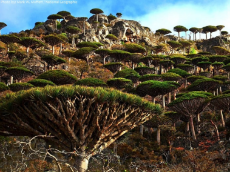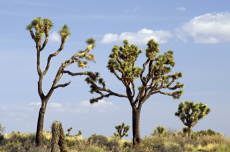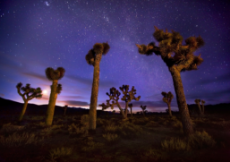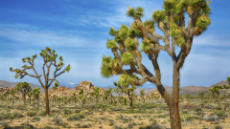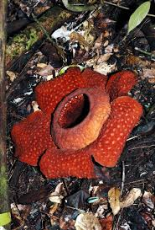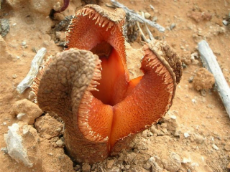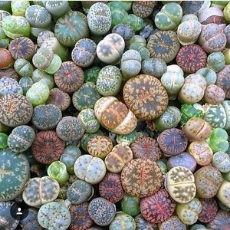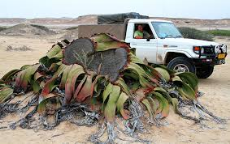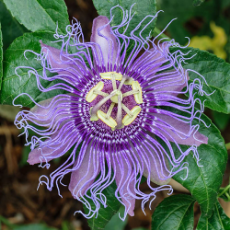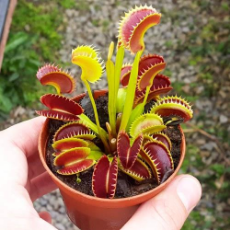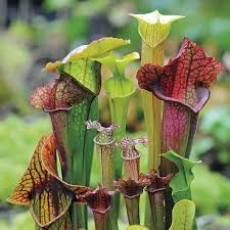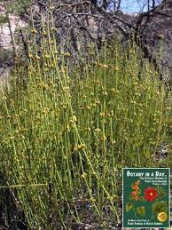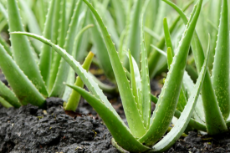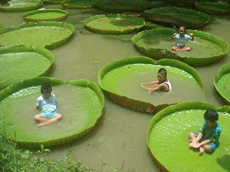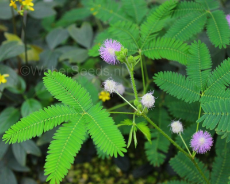Post some fucking plants
Pic is a dragon's blood tree (Dracaena cinnabari). They are named for the red sap that they produce and look like something out of a sci-fi movie. They are native to the socotra archipelago in Yemen.
The sap can be used for dyes, medication, lipstick, or varnish.
The densely packed crown of the tree provides shade to the trees roots and helps to prevent water from evaporating.
/cyb/ - Cyberpunk Fiction and Fact
Cyberpunk is the idea that technology will condemn us to a future of totalitarian nightmares here you can discuss recent events and how technology has been used to facilitate greater control by the elites, or works of fiction
25 replies | 28 files | 20 UUIDs | Page 10
1514248891_2.jpg (55.1 KB, 300x192, amazing-trees-dragons-blood71-300x192.jpg)

1514248891_3.png (593.9 KB, 640x426, dragonsbloodtree.png__640x426_q85_crop_upscale.png)
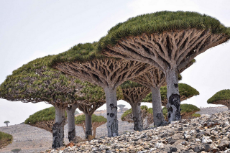
Anonymous
No.809
These are Joshua Trees (Yucca brevifolia). They should look very familiar if you are a fan of fallout new vegas, but they are real plants not the product of an irradiated wasteland.
https://en.wikipedia.org/wiki/Yucca_brevifolia
>The name Joshua tree was given by a group of Mormon settlers crossing the Mojave Desert in the mid-19th century. The tree's unique shape reminded them of a Biblical story in which Joshua reaches his hands up to the sky in prayer
>Joshua trees are fast growers for the desert; new seedlings may grow at an average rate of 7.6 cm (3.0 in) per year in their first ten years, then only about 3.8 cm (1.5 in) per year.[15] The trunk consists of thousands of small fibers and lacks annual growth rings, making it difficult to determine the tree's age. This tree has a top-heavy branch system, but also what has been described as a "deep and extensive" root system, with roots reaching up to 11 m (36 ft).[2] If it survives the rigors of the desert, it can live for hundreds of years; some specimens survive a thousand years. The tallest trees reach about 15 m (49 ft). New plants can grow from seed, but in some populations, new stems grow from underground rhizomes that spread out around the parent tree.
>Cahuilla Native Americans, who have lived in the southwestern United States for generations, identify this plant as a valuable resource and call it "hunuvat chiy’a" or "humwichawa". Their ancestors used the leaves of Y. brevifolia to weave sandals and baskets, in addition to harvesting the seeds and flower buds for meals.
https://en.wikipedia.org/wiki/Yucca_brevifolia
>The name Joshua tree was given by a group of Mormon settlers crossing the Mojave Desert in the mid-19th century. The tree's unique shape reminded them of a Biblical story in which Joshua reaches his hands up to the sky in prayer
>Joshua trees are fast growers for the desert; new seedlings may grow at an average rate of 7.6 cm (3.0 in) per year in their first ten years, then only about 3.8 cm (1.5 in) per year.[15] The trunk consists of thousands of small fibers and lacks annual growth rings, making it difficult to determine the tree's age. This tree has a top-heavy branch system, but also what has been described as a "deep and extensive" root system, with roots reaching up to 11 m (36 ft).[2] If it survives the rigors of the desert, it can live for hundreds of years; some specimens survive a thousand years. The tallest trees reach about 15 m (49 ft). New plants can grow from seed, but in some populations, new stems grow from underground rhizomes that spread out around the parent tree.
>Cahuilla Native Americans, who have lived in the southwestern United States for generations, identify this plant as a valuable resource and call it "hunuvat chiy’a" or "humwichawa". Their ancestors used the leaves of Y. brevifolia to weave sandals and baskets, in addition to harvesting the seeds and flower buds for meals.
Anonymous
No.818
>Rafflesia arnoldii, commonly called the corpse lily, is a species of flowering plant in the parasitic genus Rafflesia. It is noted for producing the largest individual flower on Earth. It has a very strong and unpleasant odour of decaying flesh, earning it the nickname "corpse flower". It is endemic to the rainforests of Sumatra and possibly Borneo.
Anonymous
No.820
1547498887.jpg (618.1 KB, 850x537, 15-09_welwitschia_angola_car_-_jonathan_basson.jpg)
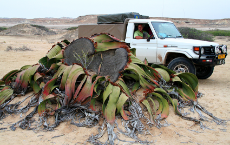
>Welwitschia is a monotypic gymnosperm genus, comprising solely the distinctive Welwitschia mirabilis. The plant is commonly known simply as welwitschia in English, but the name tree tumbo is also used. It is called kharos or khurub in Nama, tweeblaarkanniedood in Afrikaans, nyanka in Damara, and onyanga in Herero. Welwitschia is the only living genus of the family Welwitschiaceae and order Welwitschiales, in the division Gnetophyta. Informal sources commonly refer to the plant as a "living fossil".[2][3] Welwitschia mirabilis is endemic to the Namib desert within Namibia and Angola.
Anonymous
No.826
>Adansonia is a genus of deciduous trees known as baobabs. They are found in arid regions of Madagascar, mainland Africa, Arabia, and Australia. The generic name honours Michel Adanson, the French naturalist and explorer who described Adansonia digitata.[2]
>Hydnora africana is an achlorophyllous plant in the family Hydnoraceae, native to southern Africa that is parasitic on the roots of members of the Euphorbiaceae family.[1] The plant grows underground, except for a fleshy flower that emerges above ground and emits an odor of feces to attract its natural pollinators, dung beetles and carrion beetles.[2] The flowers act as temporary traps, retaining the beetles that enter long enough for them to pick up pollen.[3] It is also called jakkalskos or jackal food. The genus name comes from the Greek word hydnon, which translates to "truffle," and the specific epithet africana means to be from Africa.[4]
Anonymous
No.954
1560831504_1.jpg (165.4 KB, 1000x1000, 1389f446-a15d-403d-bcef-8accc2d83b28.jpg)
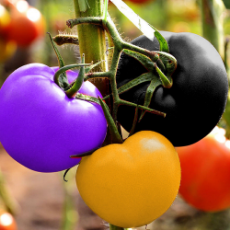
1560831504_2.jpg (96.8 KB, 800x800, 100pcs-bag-rainbow-tomato-seeds-rare-tomato.jpg)
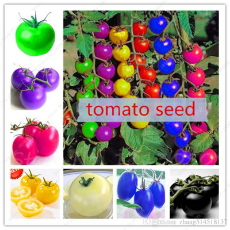
Maybe not the exact topic of the thread, but I saw a video /ourguy/ Techplant made about fake seeds which seems appropriate for /cyb/. Guess this says something about people having no connection to nature and no frame of reference with which to judge this sort of thing.
https://www.youtube.com/watch?v=KGV4eIdjaiI
https://www.youtube.com/watch?v=KGV4eIdjaiI
Anonymous
No.961
1562619634.jpg (433.3 KB, 800x1143, 800px-Amorphophallus_titanum_(corpse_flower)_-_2.jpg)
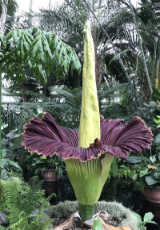
Amorphophallus titanum, also known as the titan arum, is a flowering plant with the largest unbranched inflorescence in the world. The titan arum's inflorescence is not as large as that of the talipot palm, Corypha umbraculifera, but the inflorescence of the talipot palm is branched rather than unbranched. The species is endemic to Sumatra.
Due to its odor, which is like the smell of a rotting corpse or carcass, the titan arum is characterized as a carrion flower, and is also known as the corpse flower or corpse plant (Indonesian: bunga bangkai – bunga means flower, while bangkai can be translated as corpse, cadaver, or carrion). For the same reason, the title corpse flower is also attributed to the genus Rafflesia.
Due to its odor, which is like the smell of a rotting corpse or carcass, the titan arum is characterized as a carrion flower, and is also known as the corpse flower or corpse plant (Indonesian: bunga bangkai – bunga means flower, while bangkai can be translated as corpse, cadaver, or carrion). For the same reason, the title corpse flower is also attributed to the genus Rafflesia.
Anonymous
No.967
Lithops is a genus of succulent plants in the ice plant family, Aizoaceae. Members of the genus are native to southern Africa. The name is derived from the Ancient Greek words λίθος, meaning "stone," and ὄψ, meaning "face," referring to the stone-like appearance of the plants.
Anonymous
No.978
Welwitschia is a monotypic gymnosperm genus, comprising solely the distinctive Welwitschia mirabilis, endemic to the Namib desert within Namibia and Angola. The plant is commonly known simply as welwitschia in English, but the name tree tumbo is also used. It is called kharos or khurub in Nama, tweeblaarkanniedood in Afrikaans, nyanka in Damara, and onyanga in Herero. Welwitschia is the only living genus of the family Welwitschiaceae and order Welwitschiales, in the division Gnetophyta. Informal sources commonly refer to the plant as a "living fossil".
Anonymous
No.981
Sunflowers are among the best plants for phytoremediation of lead and other toxins. The common sunflower has been the subject of numerous studies and is used to extract heavy metals and toxins including Lead, Uranium, Strontium, Cesium, Chromium, Cadmium, Copper, Magnesium, Nickel, and Zinc.
Cleistocactus strausii, commonly known as the silver torch or wooly torch, is a perennial cactus of the family Cactaceae. It is native to high mountain regions of Bolivia and Argentina, above 3,000 m. Its slender, erect, grey-green columns can reach a height of 3 m, but are only about 6 cm across.
Anonymous
No.1004
1567529445.jpg (100.3 KB, 1155x648, blueberries-1296x728-feature.jpg)

Blue berries are of interest because they contain many antioxidants. They can help prevent cancer and Alzheimer's.
Anonymous
No.1010
>>808
Passiflora incarnata, commonly known as maypop, purple passionflower, true passionflower, wild apricot, and wild passion vine, is a fast-growing perennial vine with climbing or trailing stems. A member of the passionflower genus Passiflora, the maypop has large, intricate flowers with prominent styles and stamens. One of the hardiest species of passionflower, it is both found as a wildflower in the southern United States and in cultivation for its fruit and striking bluish purple blooms.
Passiflora incarnata, commonly known as maypop, purple passionflower, true passionflower, wild apricot, and wild passion vine, is a fast-growing perennial vine with climbing or trailing stems. A member of the passionflower genus Passiflora, the maypop has large, intricate flowers with prominent styles and stamens. One of the hardiest species of passionflower, it is both found as a wildflower in the southern United States and in cultivation for its fruit and striking bluish purple blooms.
Anonymous
No.1015
The Venus flytrap (Dionaea muscipula) is a carnivorous plant native to subtropical wetlands on the East Coast of the United States in North Carolina and South Carolina.[3] It catches its prey—chiefly insects and arachnids—with a trapping structure formed by the terminal portion of each of the plant's leaves, which is triggered by tiny hairs (called "trigger hairs" or "sensitive hairs") on their inner surfaces.
Anonymous
No.1023
1569300112.jpg (125.8 KB, 1024x768, Baseball-Plant-Euphorbia-obesa.jpg)
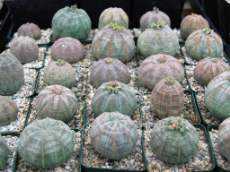
Euphorbia obesa is a subtropical succulent species in the genus Euphorbia. It comes from South Africa, especially in the Cape Province. Sometimes referred to as a Baseball plant.
Anonymous
No.1029
Pitcher plants are several different carnivorous plants which have modified leaves known as pitfall traps—a prey-trapping mechanism featuring a deep cavity filled with digestive liquid. The traps of what are considered to be "true" pitcher plants are formed by specialized leaves.
Anonymous
No.1034
Ephedra is a genus of gymnosperm shrubs, the only genus in its family, Ephedraceae, and order, Ephedrales. The various species of Ephedra are widespread in many lands, native to southwestern North America, southern Europe, northern Africa, southwest and central Asia, northern China and western South America.
Anonymous
No.1037
Aloe Vera. For years, people have used the secretions of this plant to treat burns, cuts or superficial infections. It's great for digestion, also, if you take it with juice.
Anonymous
No.1042
Victoria amazonica is a species of flowering plant, the largest of the Nymphaeaceae family of water lilies. It is the National flower of Guyana
Anonymous
No.1069
Mimosa pudica is a creeping annual or perennial flowering plant of the pea/legume family Fabaceae and Magnoliopsida taxon, often grown for its curiosity value: the compound leaves fold inward and droop when touched or shaken, defending themselves from harm, and re-open a few minutes later.

